Deconstructing the Integral Approach
An In-Depth Guide to Personal, Organizational, and Global Evolution

I first encountered the Integral Approach a few years ago through a course. Despite going through it twice, I'll admit, it didn't quite click for me at the time.
However, my perspective shifted dramatically in 2021 when I delved into the book "Reinventing Organizations" while exploring content for DAOs and contemplating the future of organizational structures. Halfway through the book, I had an 'aha' moment that I couldn't shake off, and I've been captivated by its relevance ever since.
So, what exactly is the Integral Approach, and why should you care?
Have you ever paused to consider the intricate web of connections that make up our universe?
This interconnectedness isn't just a lofty concept; it's a tangible force that influences every facet of our lives. From our inner emotional dimension to our physical bodies, from our interpersonal relationships to our roles in our communities and nations, everything is interconnected. This interconnectedness can be understood through the concept of 'holons,' which I've explored in detail in another post.
Origins and Ken Wilber
Integral Theory is a comprehensive transdisciplinary framework that seeks to integrate various fields of knowledge, including science, philosophy, spirituality, and art. It was developed primarily by American philosopher Ken Wilber, who first introduced the framework in his 1977 book "The Spectrum of Consciousness." Wilber's work has evolved over the years, culminating in a series of books and articles that elaborate on the Integral model.
Ken Wilber is often credited with being one of the most significant philosophers of the 21st century. He has a background in ecology, biochemistry, and Eastern and Western philosophy. Wilber's Integral Theory is influenced by various philosophical traditions, including existentialism, empiricism, and especially Eastern philosophies like Buddhism.
The Integral framework is designed to be inclusive, aiming to reconcile the seemingly disparate domains of human experience and knowledge. Wilber's model is often depicted as a four-quadrant grid, representing different dimensions of reality: the interior and exterior of individuals and collectives. This model serves as a tool for understanding how various academic disciplines, spiritual traditions, and even everyday experiences can be synthesized into a more holistic understanding of reality.
Let’s deconstruct what that means.
The Integral framework consists of 2 main parts: the first engages your creative side and the second engages your analytical side.
- Demystifying Spirituality: In my opinion, it's easier to understand compared to other spiritual philosophies I've studied.
- The Four Quadrants: The different dimensions of your life explained using levels or stages of human development and a psychograph, which is your unique combination of intelligences at various levels.
All four dimensions are explained using the AQAL framework: All Quadrants, All States, All Levels, and All Stages. This will become clear as we delve into the next paragraphs.
Demystifying Spirituality
To explain this part, let's talk about consciousness—your consciousness. Some of you might tune out at this point, but bear with me; this will make a lot of sense once we get into it.
We have three main states of consciousness: awake, dreaming, and deep sleep. Ancient Eastern and Western wisdom traditions say that within these states, there is a great opportunity for enlightenment.
So, when you have that "aha" moment or experience a sense of profoundness or get into a creative streak, it's the potential from the different states of consciousness you've been experiencing. We use terms like "aha," "profound," and "creative" because the insights we gain come from a wide range of fields, many of which we have no knowledge of.
Meditative states, altered states, and peak experiences are a few examples of higher states of consciousness compared to what you typically experience in your normal waking state.
The key point here is that it's a state of consciousness, not permanent. For example, the way you feel when you meditate for maybe 20 minutes might shift into another state of consciousness afterward. However, the more frequently you experience a particular state of consciousness, the more likely it is to integrate into a more permanent, higher stage of consciousness.
“Stages of development” are also referred to as “levels of development,” the idea being that each stage represents a level of organization or a level of complexity. For example, in the sequence from atoms to molecules to cells to organisms, each of those stages of evolution involves a greater level of complexity.” - The Integral Vision
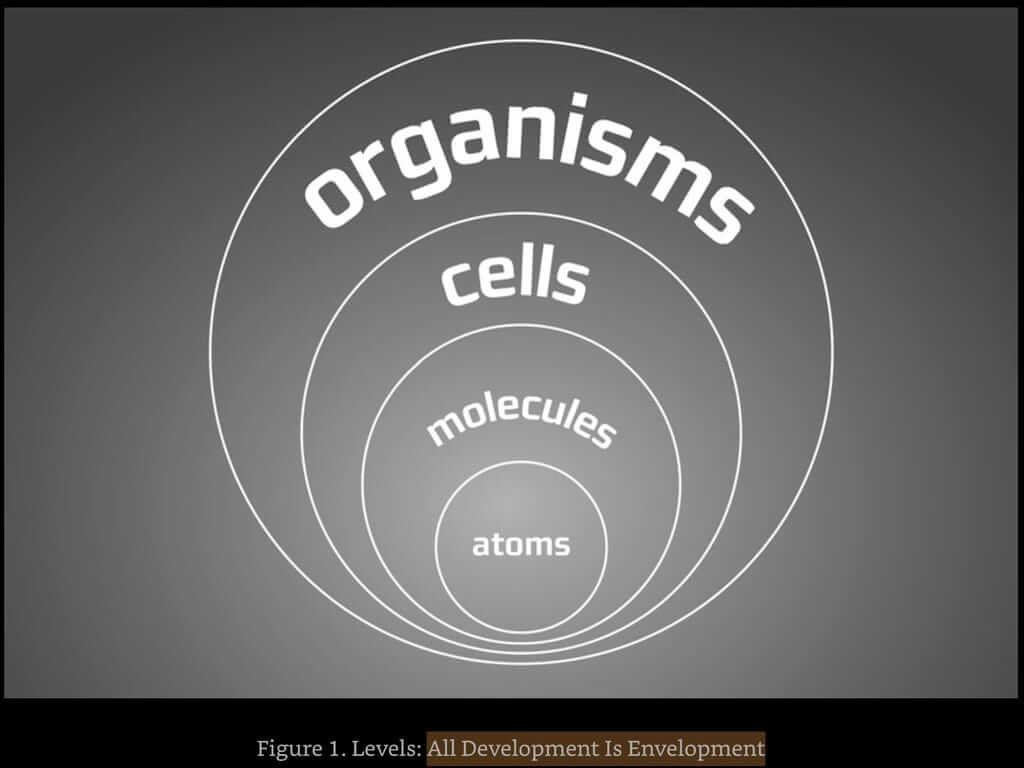
Because the nature of stages is fluid, they are also called waves. There are 8 to 10 stages, levels, or waves in Integral Theory.
An important point to note is that one stage is not superior or inferior to another. This is because we often associate "lower" with "bad" and "higher" with "good," especially in economic contexts.
For simplification purposes, let's synthesize the stages to three stages of development.
Stages of Awareness: From Ego to Worldcentric
When we are babies, we are egocentric (me); the world revolves around us. As children, when our awareness expands to include things and people in our community, we enter the ethnocentric stage (us). As adults, our awareness extends to people regardless of gender, age, and ethnicity; this stage of development is called worldcentric. At this stage, you have extended your care and concern to the whole world.
Another way of understanding stages of development is through body, mind, and spirit. When you are strongly identified with your body, you are egocentric. When you are dominantly identified with your mind, you are ethnocentric; you relate to others who share the same interests and ideals. When you are at the worldcentric stage, you feel expansive; you identify with everyone, regardless of whether you share common interests or not.
The main point here is that we undergo stages of development in different areas of our lives.
“Whether we talk stages of consciousness, stages of energy, stages of culture, stages of spiritual realization, stages of moral development, and so on, we are talking of these important and fundamental rungs in the unfolding of your higher, deeper, wider potentials.” - The Integral Vision
This brings us to the next aspect of the Integral Approach: lines of development.
One Human, Multiple Intelligences
This section explores the concept of intelligence, emphasizing that each of us possesses multiple forms of intelligence. Your unique combination of these intelligences and levels forms what is known as your psychograph.
The image below encapsulates everything discussed so far: stages or levels of development plotted against multiple lines of development. This tool can be invaluable for identifying your potential—where you excel, where you don't, and at which stage you are with each of your intelligences. You can also apply this understanding to the people in your life, nurturing a deeper sense of empathy and self-compassion
Personally, grasping this chart has made me more compassionate towards others and kinder to myself. It provides a nuanced understanding that we all have unique capabilities and are unevenly developed. This insight helps manage expectations—both of ourselves and others—and offers a visual guide for areas needing improvement.
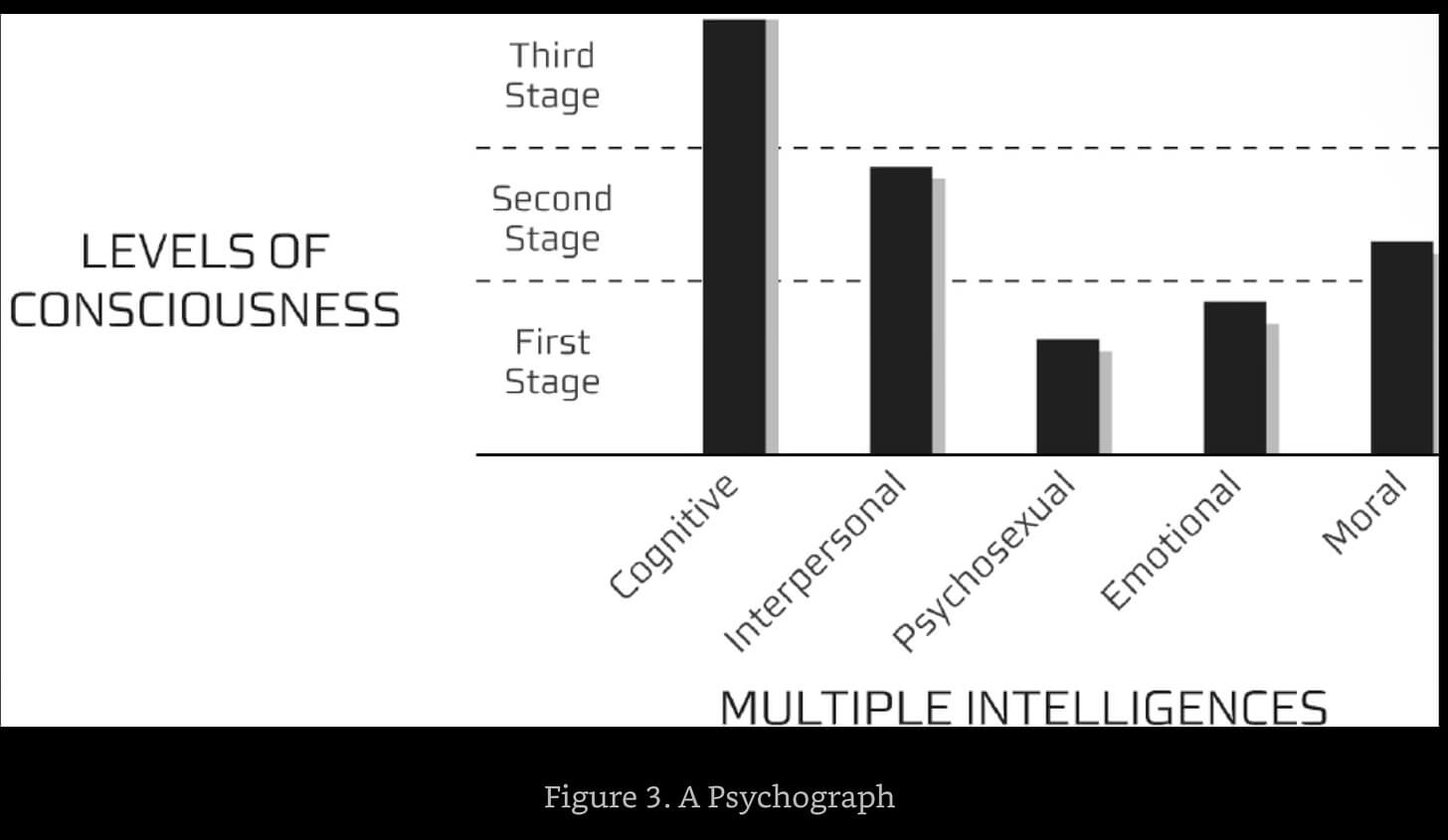
Our intelligences are not limited to the examples provided above.
“Howard Gardner made this concept fairly well known using the idea of multiple intelligences. Human beings have a variety of intelligences, such as cognitive intelligence, emotional intelligence, musical intelligence, kinesthetic intelligence, and so on. Most people excel in one or two of those, but do poorly in the others. This is not necessarily or even usually a bad thing; part of integral wisdom is finding where we excel and thus where we can best offer the world our deepest gifts.” - The Integral Vision
The next element we'll explore is 'types.’
Masculine and Feminine
Men and women develop differently. Carol Gilligan, who has done extensive work on this subject, says that women develop in a different voice than men. She also refers to the stages of growth as hierarchical because as we progress to higher stages, we develop a greater capacity for care and compassion.
Each of us has both masculine and feminine qualities. The caduceus symbol serves as an excellent visualization of this concept. As we move through our stages of development, both masculine and feminine elements ultimately merge and ground at the highest stage.
“Masculine and feminine meet and unite at the crown—they literally become one. And that is what Gilligan found with her stage-4 moral development: the two voices in each person become integrated, so that there is a paradoxical union of autonomy and relationship, rights and responsibilities, agency and communion, wisdom and compassion, justice and mercy, masculine and feminine.”- The Integral Vision
In yogic culture, the chakra system serves as a more complex version of the three stages we're discussing here. Now, to go full circle with explaining this framework, let's return to the topic of consciousness.
Coming Full Circle: Consciousness and the Human Experience
Earlier, I touched on the three main states of consciousness: awake, dreaming, and deep sleep. It's crucial to understand that each state of consciousness we experience is embodied, meaning it manifests in our physical body, the vessel for our human experience.
“For the wisdom traditions, a “body” simply means a mode of experience or energetic feeling. So there is coarse or gross experience, subtle or refined experience, and very subtle or causal experience.”- The Integral Vision
Our gross body is associated with our five senses and is most active in our waking state. The subtle body comes into play during sleep, particularly in the dreaming phase. In deep sleep, we transition into a formless state, which is our causal body.
To elaborate, in our waking state, we are most familiar with our gross body. When we sleep and enter the dream phase, our gross body recedes into the background, and our experience becomes fluid, almost wave-like.
In the deep, formless sleep state, the sense of 'me' dissolves, leaving an expansive feeling beyond ourselves. If you've ever lost yourself in a moment—perhaps while meditating, being in nature, or even deeply engrossed in a task—you might have touched on a similar experience.
Evolutionary Perspective: The Triune Brain
Another lens through which to view these three bodies is by examining human evolution. Humans have developed three brains over time: the reptilian brain, the limbic system, and the neocortex. Each new brain brought increased complexity to our experience.
- The reptilian brain takes care of our basic needs.
- The limbic system, more complex than the reptilian brain, governs our emotions.
- The neocortex, the most complex, serves as our tool for experiencing expanded awareness, oneness, and higher states of consciousness.
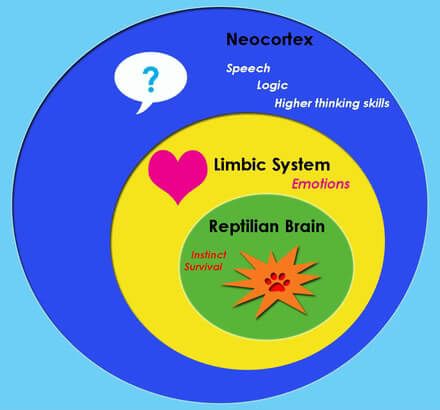
To sum up, as our internal complexity increases—evidenced by our progression through higher states of consciousness—our external body also increases in complexity. This is why animals don't possess the level of consciousness that humans do.
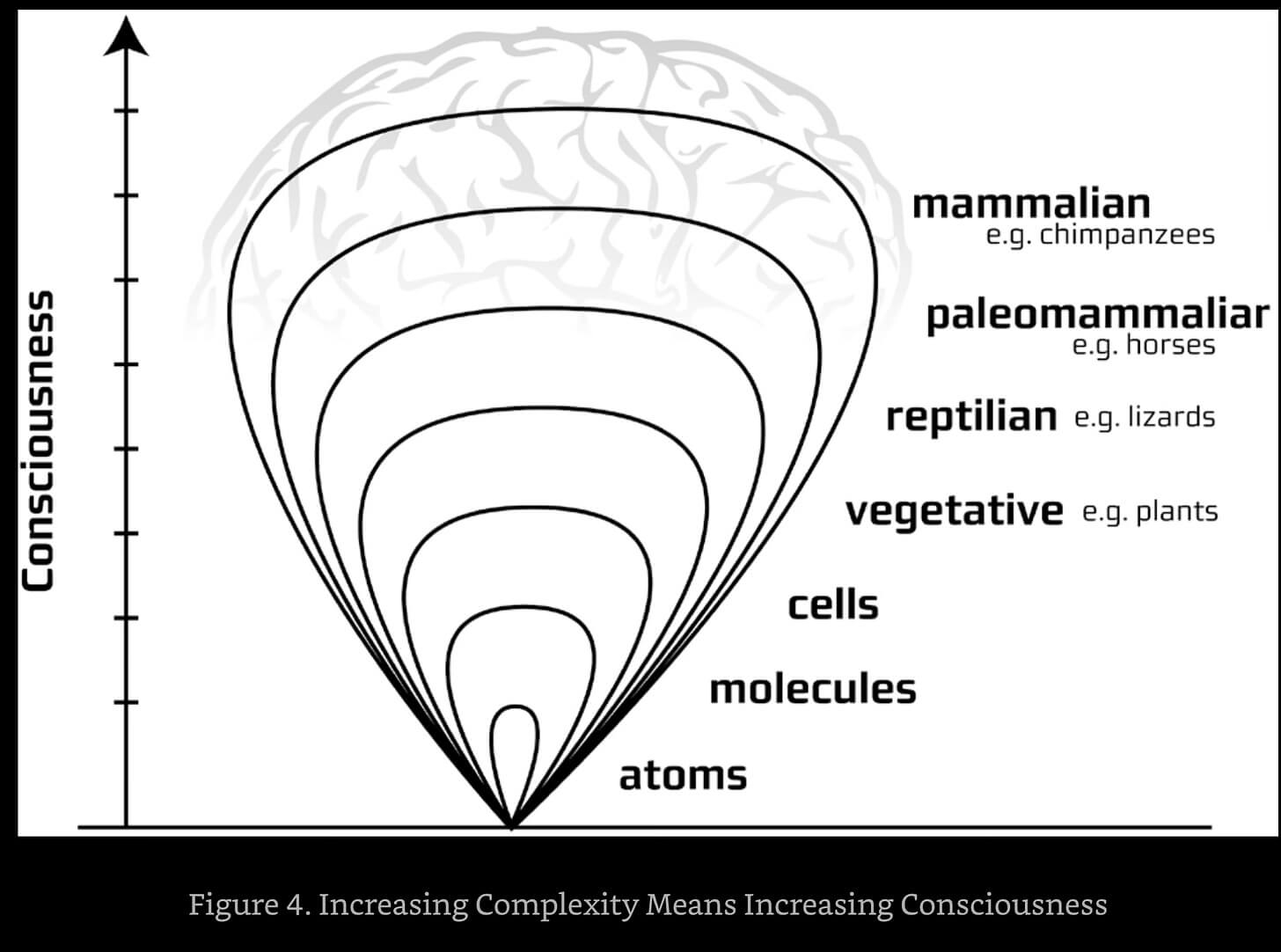
Returning to the concept of the "three bodies," it's important to note that these subtler dimensions require a heightened level of awareness. In other words, they become more accessible as we reach higher states of consciousness. However, these subtler dimensions often elude us in our waking state because they are not part of our immediate, experiential reality.
So, how does all of this connect within the AQAL framework?
AQAL: The Five Components
(All Quadrants, All Levels, All Lines, All States, All Types)
Here’s a summary of what we have discussed so far:
- Levels: Stages of development from basic cognitive functions to spiritual enlightenment.
- Lines: Different facets of intelligence, such as emotional, cognitive, and moral.
- States: States of consciousness, from waking to dreaming to deep meditative states.
- Types: Various categories of human experiences, like gender, personality types, etc.
The AQAL model (pronounced ah-qual) illustrates the evolutionary patterns that demonstrate our interconnectedness with everything around us. It shows the hierarchical structure of our multi-dimensional selves and our relationship with the external world.
“IOS—and the Integral Model—would be not a “whole” but a “heap” if it did not suggest a way that all of these various components are related.”- The Integral Vision
Discovering the profound patterns that connect is a major accomplishment of the Integral Approach.” - The Integral Vision
What the Integral Approach accomplishes is that it consolidates everything we've discussed so far, offering a lens through which we can perceive and make sense of the world. All these elements—levels, lines, states, and types—are visualized together using quadrants, providing a comprehensive map for understanding the complexities of human experience.
The Four Quadrants: A Comprehensive View of Our World
Ken Wilber employs first, second, and third-person pronouns to elucidate the four quadrants, making them relatable and easy to understand.
- First-Person Pronoun (I, Me, Mine): This represents the 'I' or the self. In philosophical terms, it's the "Beautiful."
- Second-Person Pronoun (You, Yours): This signifies the 'We' or the culture. It's often referred to as the "Good."
- Third-Person Pronoun (He, She, Them, It, Its): This stands for 'It' or 'Its,' representing nature or the external world. It's known as the "Truth."

In another interpretation:
- I symbolizes the self, or the interior world, encompassing senses, feelings, etc.
- It represents the exterior aspects of yourself, such as your body and behavior.
- We signifies culture, defining how we interact with each other.
- Its encompasses broader systems like family, tribe, and nation-states.
These quadrants serve as a comprehensive framework, encapsulating the various dimensions of human experience.
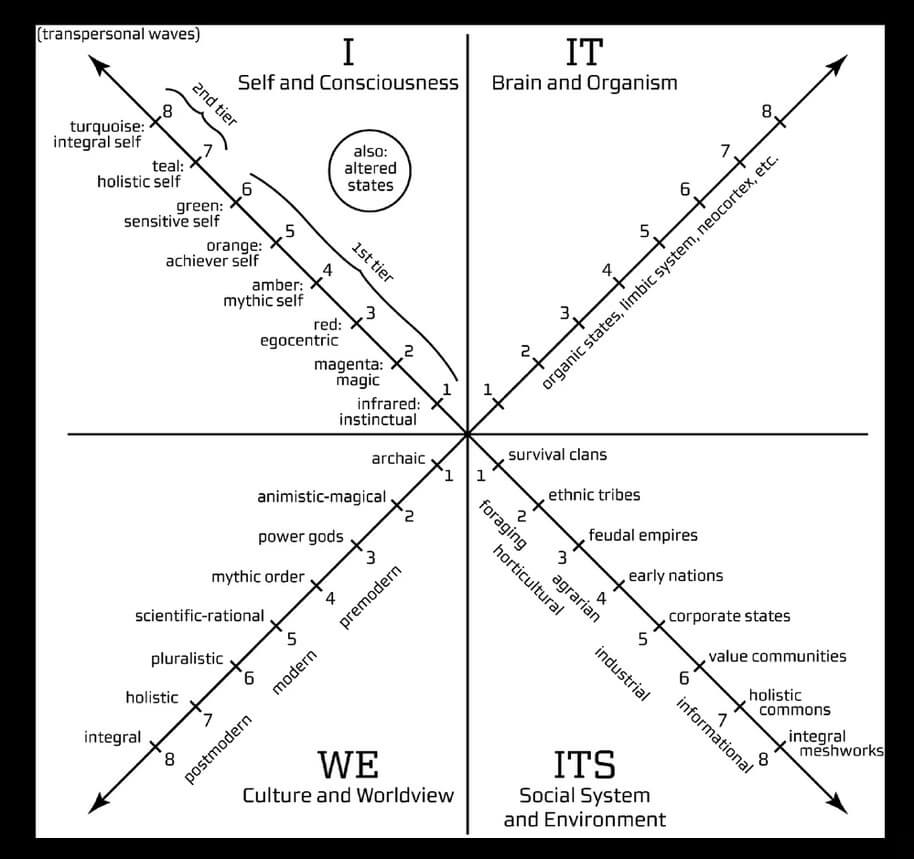
In essence, the Integral Approach offers a comprehensive framework that maps both individual and collective development—internally and externally.
Personal and Collective Insights
From my own experience, this approach has illuminated several key insights:
- Universal Progression: It suggests that the universe is nudging us toward higher states of consciousness, not just economically but in a deeply human sense. It's about self-actualization, moving us toward abundance and away from scarcity.
- Historical Context: The approach helps make sense of historical events and current times. For instance, when listening to macroeconomists and macro fund managers, the 'why' behind events becomes clearer, even if the events themselves are perplexing.
- Spiritual Clarity: The approach helps make sense of historical events and current times. Whether you're delving into the insights of macroeconomists and macro fund managers or simply trying to understand the complexities of today's world, the 'why' behind events becomes clearer, even if the events themselves are perplexing.
Practical Applications
If you delve deeper into the subject by reading the book, you'll find that this approach is scientific and integrates wisdom from multiple ancient cultures. This makes mysticism more accessible and deconstructable.
Moreover, the book explores how this approach can be applied across various fields, offering practices to fully engage with the Integral Approach.
The Potential for Transformation in Organizations
What truly resonated with me was Frederic Laloux's application of the Integral Approach in his book "Reinventing Organizations." His insights shed light on why certain work environments can feel so draining, almost to the point of being unbearable. The concept of natural evolution within organizations is not just intriguing; it's transformative.
I often find myself wondering, if this philosophy has the power to unlock our fullest potential, why isn't it more widely adopted? Perhaps it's a matter of time, or maybe it's my own impatience and the excitement I feel from this newfound understanding.
But what if we could accelerate this process? What if we could create environments—both individual and collective—that suffer less and thrive more? What would that world look like?
That's the driving force behind this post. I hope that by sharing these insights, more people will awaken to the possibilities that the Integral Approach offers for making sense of our complex world.